What Stars Are Made Of
Astronomers use diffraction gratings to discover what stars and other glowing objects are made of. They do it by analyzing (or breaking apart) the light that comes from a star. Some stars give off light like this.
Put the hydrogen tube on its power supply, turn it on and turn off the white light. Make sure that everyone has a chance to see the hydrogen light. Caution: POWER supply is high voltage!
Alternatively, use the “spectra” movie, using the pause function to stop on various spectra for discussion as needed.Look at this light through your diffraction grating.
Can you see the whole rainbow?
[No, only 3 lines: red, green-blue and purple.]
VISUAL 6b (still): Hydrogen Spectrum
To be used in conjunction with the live demonstration of viewing spectra. Fade on a still of the spectrum of hydrogen light around the zenith.
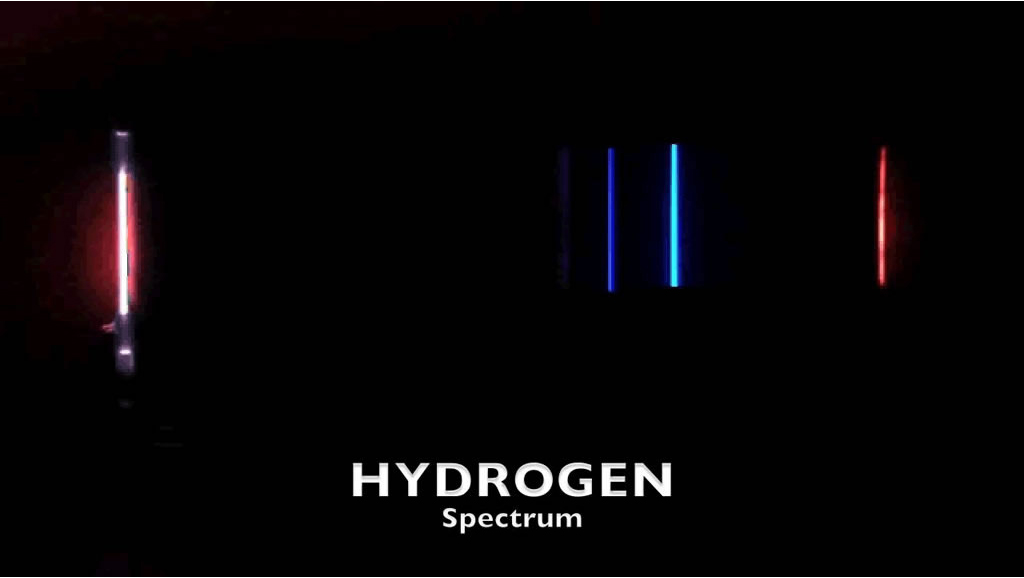
Only a gas called hydrogen gives off this combination of colors when it gets very hot. A set of colored lines like these is called an “emission spectrum.” So, when astronomers find this particular set of colors in the light of a star, they know that star has hydrogen in it. Most stars in the universe are made mostly of hydrogen. I would like you to remember this set of colors or spectrum, for two reasons: one, to compare with the spectrums (or spectra) from other gases that I am going to show you in a moment, and two, to be able to identify a mystery gas.
Display hydrogen again for a few more seconds, then replace the hydrogen tube with the helium tube and display it in similar way.
Optional
Filters are one way to separate light into its individual colors but another way is to use a prism that creates a rainbow. Here I have a source of white light passing through a slit.
[Turn on slide projector with slit so a line of white light appears on the dome.]
Now I am going to put a prism in the path of that white light.
[Move prism to the right place to produce a rainbow on the dome.]
Notice that the rainbow doesn’t appear in the same place as the white light. It shifted position because the prism bends the path of the light going through it. But all the colors that are making up the white light are bent different amounts; violet is bent the most, red the least, so all the components of white light are separated. Again we see the rainbow colors: Red, orange, yellow, green, blue and violet. Our eyes are not sensitive to the invisible colors such as infrared and ultraviolet.
[Use light pointer to indicate where infrared and ultraviolet would appear if we could see them.]
Sometimes the light from stars looks like this.
What colors do you see now?
[Red, yellow, green, purple.]
VISUAL 6c (still): Helium Spectrum
To be used in conjunction with the live demonstration of viewing spectra. Fade on a still of the spectrum of helium light sequentially around the zenith.
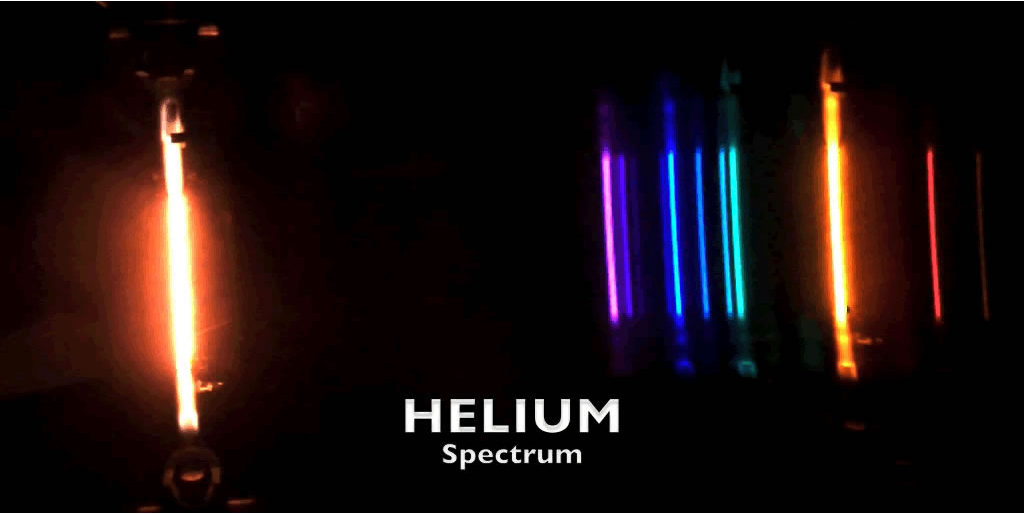
Those are the components of the light from helium. Many stars have helium in them. The hydrogen that “burns” in the stars changes into helium. Remember this spectrum, too.
Replace the helium with the neon tube and display it in a similar way.
VISUAL 6d (still): Neon Spectrum
To be used in conjunction with the live demonstration of viewing spectra. Fade on a still of the spectrum of neon light sequentially around the zenith.
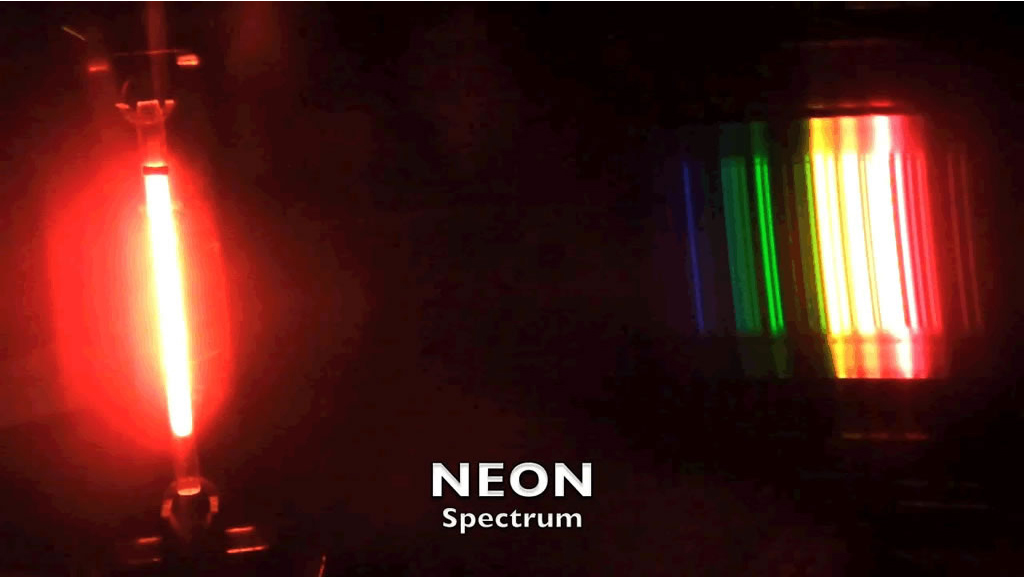
Older stars have a gas that glows like this. This is neon.
What colors do you see through your diffraction grating?
[Red, orange, and yellow lines…and a green line.]
Using diffraction gratings scientists can decode the information that comes in the light from stars and know what they’re made of. Also, by looking at how much of each element a star has, scientists can determine the approximate age of that star—in millions or billions of years.
You can show other gases if you wish.
VISUAL 6e (still): Mercury Spectrum
To be used in conjunction with the live demonstration of viewing spectra. Fade on a still of the spectrum of mercury light sequentially around the zenith.
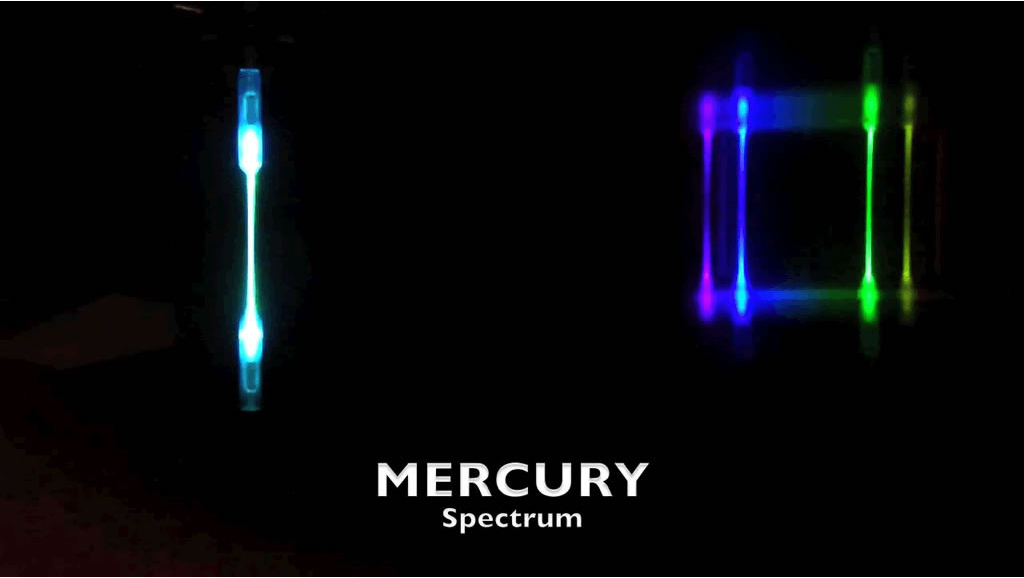
VISUAL 6f (still): Spectra
Turn on an image comparing the full emission spectra of various elements (including iron).
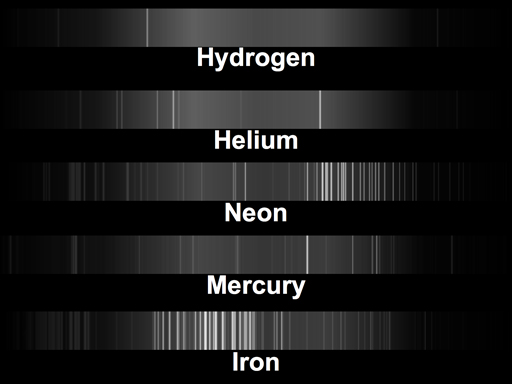
Then pick one “mystery tube,” put it on the power supply, and display it. In the following paragraph, the instructor uses water vapor as the mystery gas.
VISUAL 6g (still): Mystery Spectrum
To be used in conjunction with the live demonstration of viewing spectra. Fade on a still of the spectrum of mystery light sequentially around the zenith.
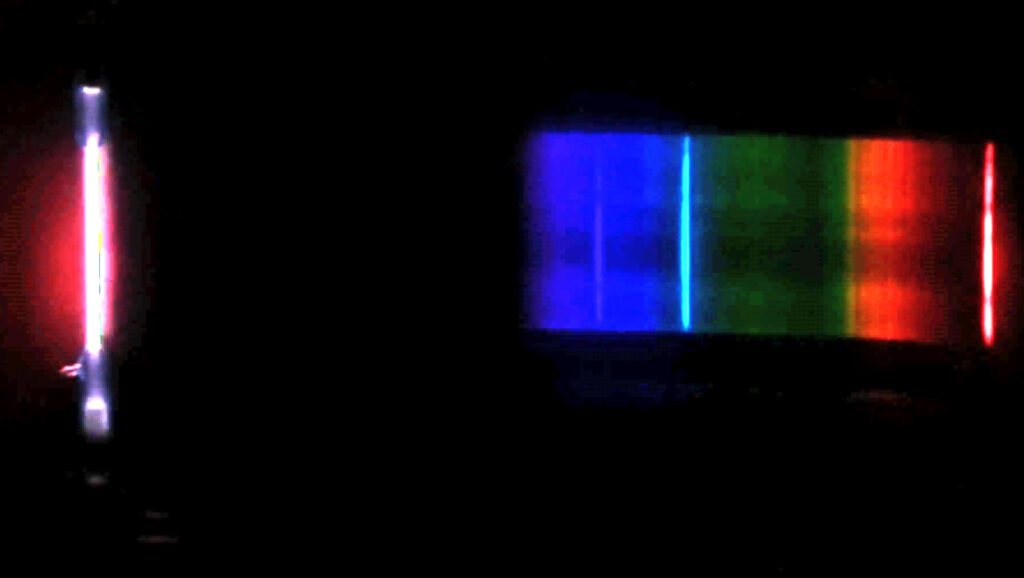
And here’s the mystery gas! If you were an astronomer trying to identify the contents of a glowing gas like this, you would compare its spectrum with the spectra of gases you already know.
Is this spectrum similar to a spectrum you have already seen?
[Yes, similar to hydrogen.]
The gas in this tube is made mostly of hydrogen. The other component is oxygen.
What is made with two parts of hydrogen and one of oxygen?
[Water.]
The gas in this tube is water vapor, its spectrum is very similar to hydrogen’s.
Turn off power supply.

